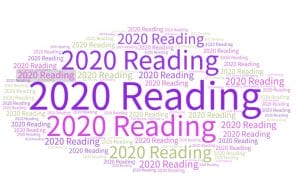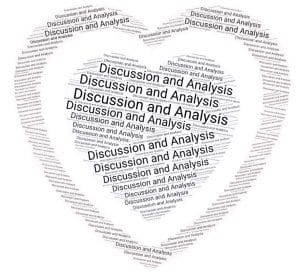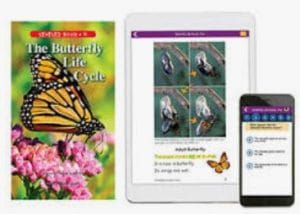How can you build a growth mindset with Reading? How can you help build knowledge, perspective and develop the habit of good reading for children? it is when adults model and read the right text, at the right time through open discussions. So what do we do?
India is blessed with a variety of religion, culture and language. It is a celebration all year round. You and I can take this opportunity to invite our students to learn about the festivals and purpose behind the holidays.
Most importantly look for a common thread, a theme that overlaps one another. A common theme will bring unity, understanding and respect that we owe to all human beings. It will lift us from a basic description of festivals to thinking about the cause, impact and importance of the festival.
What should I read to my students/children in January or the Winter months in India? What can librarians and teachers read to students?
Reading For Young Children:
- New Year Celebrations is often recognized by students as the beginning year with promises and resolutions. This book The Hundred and Thirty-Seventh Leg by Pratham will help invite students to think about kindness, care and make decisions to begin a year with empathy. Children can either discuss, share or write on index cards -about their resolution and stick it on the resolution tree on the bulletin board.
- This Book Sikh, Jain, Buddhist, Parsi, Sindhi & Other F…by Vyanst, Gurivi G shares why and how different festivals are celebrated. And this one can be used to think of the similarities, and the differences among the festivals Lohri, Pongal and Makar Sankranti – each of them related to harvest time. The compare and contrast reflection sheets help in teaching students to evaluate works about similar topics offer positions of differences within the subject – while developing a theme.
Reading about Important dates in January 2020
Time and Date tells us the events in India
Jan 1Wednesday New Year’s Day Restricted Holiday
Jan 2Thursday Guru Govind Singh Jayanti Restricted Holiday
Jan 14Tuesday Lohri Restricted Holiday
Jan 15Wednesday Pongal Restricted Holiday
Jan 15Wednesday Makar Sankranti Restricted Holiday
Jan 25Saturday Chinese New Year Observance
Jan 26Sunday Republic Day Gazetted HolidayJan 29Wednesday
Jan 29 Wednesday Vasant Panchami Restricted Holiday
Reading and Discussions with Older Students in January 2020
Republic Day
Instead of colouring the flag, asking students, what happens on Republic Day, who was the first president, as educators we need to ask open-ended and higher-order thinking questions that can promote thinking and analyses. It is a challenging process for teachers to deal with controversial topics, if we do not do take the responsibility, then who will?
- Researching on what it means for India to be a Republic?
- How is India’s Republic Status different from other countries Republic Status?
- Does it mean the same for all the countries – Explain?
- How is the CAB bill (Citizenship Amendment Bill, 2019) an extension of the Republic? Why is it a pressing bill?
- How can we ensure that CAB and National Register of Citizens bills are well understood?
Media Literacy with Reading
Teaching when done at the right time, becomes the Aha Moment! that we look for – Relevant and Timely. This is the time to introduce Media Literacy and look into biases and perspectives of different people by asking these questions?
- Who wrote or created the video, app, meme?
- Does the author have credible credentials to back the information?
- Why was it created?
- Does the information match with other websites?
- Are these different points of view?
If the article or media creates a strong emotive (positive or negative) reaction, we must remember to hold off and not jump to conclusions. Unless we read extensively about different perspectives and then draw informed decisions based on personal knowledge. We need to remember to hold off before spreading and passing on the information, especially if it is biased and/or has only one point of view.
Responsible Digital Citizen & Reading
The internet has allowed everyone to share their voice and opinions. But, that doesn’t mean, everyone who shares on the internet is well informed when making opinions. It is crucial to learn how to be a responsible digital citizen. While discussing controversial topics, it is important for the teacher, to provide newspaper cuttings, articles from different sources to build on information, analyze, think and clarify.
New Year Reading Topic for Older Students
Older students can also look up the history of ‘New Year Celebrations’ – What it means to different people in different religions and countries.
- How can we be respectful and celebratory of all religions? The Bahaii, Islam, Hindu, Jains, Buddhists, Parsis, Christians all have different days for their New Year.
- What can we do as a nation to build solidarity, empathy and dignity of all?
What is a Discussion?
A good rule for analysis or discussion needs to be based on hard facts and a soft voice. A discussion should be an attempt to explore and understand the subject from all points of view and not a clash of who is right or wrong.
Discussion is not a debate – no one is right or wrong. It is an attempt to emphatically listen to each other. The teachers’ job here is that of a facilitator, not taking sides, recognize and encourage fact-based discussion with an emphasis on the origin of the information. (Where did the information come from and what makes you stand by that information – is it based on facts or opinions) Ensure that we build a community of learners with a heart.
Teachers as Reading Facilitators
Open discussions and respect of varied opinions are a part of a matured mind and elevated intellect.
Having robust discussions about politics, religion are challenging but not impossible. An excellent reminder to the teachers and students would be to remember, we all are humans, we all have rights and responsibility, and it is necessary to adopt and include all members of the human society while each one performing their responsibilities.




